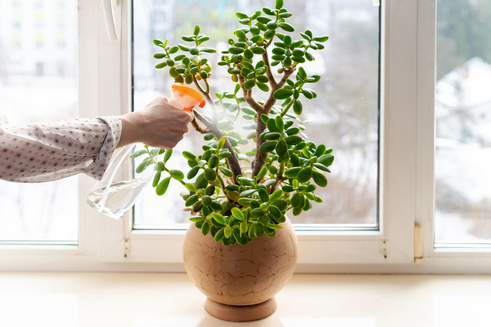Perfect Environment For Growing A Jade Plant
The Jade plant should be placed where it will receive four to six hours of indirect sunlight daily. Jade plants when grown indoors require well-draining soil and the room temperature should range between 15- 31 degrees Celsius. Although it might do well in sandy or even rocky soil, jade plants are grown as indoor plants and prefer potting mix with a slight acidity and perlite. You can purchase the potting mix for growing succulents and cacti plants to ensure the right drainage. If grown outside, jade plants are vulnerable to frostbite and root rot and should be grown in warm dry climates.













